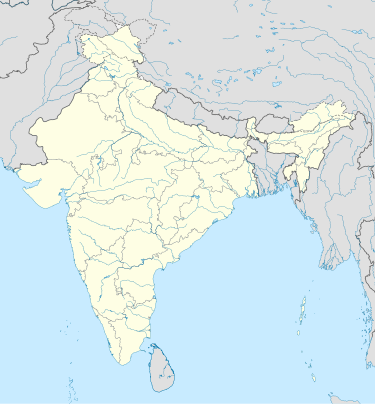Panch Sarovar
| Part of a series on |
| Hinduism |
|---|
 |
According to Hindu theology, there are five sacred lakes; collectively called the Panch Sarovar or Panch-Sarovar: Manasarovar, Bindu Sarovar, Narayan Sarovar, Pampa Sarovar and Pushkar Sarovar.[1] The lakes are mentioned in the Shrimad Bhagavata Purana.[2] The Hindu epics, like the Ramayana and Mahabharata, also narrate the significance of bathing in these lakes.[2] Four of the lakes are in India, while Manasarovar is in Tibet.
Manasarovar
[edit]Lake Manasarovar and Mount Kailash are believed to be the abode of Shiva. This is where the holy river the Ganges is believed to be tamed by Shiva and sent to nourish the fertile valleys below the Himalayas. It is sometimes conflated with Meru.[3] For the Khas, Hindu shamans of the nearby region of Humla (northwest Nepal), a ritual bath in Lake Manasarovar is an important step in gaining their shamanic powers.[4]
Pushkar Sarovar
[edit]Ramayana and Mahabharata refer to Pushkar Lake as Adi Tirtha, or the "original sacred water-body". The famous Sanskrit poet and play-writer Kalidasa also referred to this lake in his poem Abhijñānaśākuntalam.[5] The Ramayana mentions that Vishwamitra performed penance at Pushkar Lake for a thousand years. In spite of Brahma appearing before him and granting him the higher status of a rishi instead of a royal-sage (rajarishi), Vishwamitra continued his penance, but, the celestial nymph apsara, Menaka came to the lake to take a bath. Vishwamitra was enamoured by her beauty and they decided to live together in pursuit of pleasure for ten years. Then, Vishwamitra realized that his main activity of penance was disturbed. He, therefore, took leave of Menaka and went away to the north to continue his meditation.[6] Vishwamitra was also described as building the Brahma temple at Pushkar after Brahma's yagna.[7]
It is also the belief of devotees that a dip in the waters of the lake on Kartik Poornima would equal the benefits that would accrue by performing yagnas (fire-sacrifices) for several centuries.[8]
References
[edit]- ^ [1] Encyclopaedia of tourism resources in India, Volume 2 By Manohar Sajnani
- ^ a b Olsen, Daniel H.; Timothy, Dallen J. (2021-07-29). The Routledge Handbook of Religious and Spiritual Tourism. Routledge. ISBN 978-0-429-57511-2.
- ^ Brockman, Norbert C. (2011). Encyclopedia of Sacred Places. ABC-CLIO. p. 356. ISBN 978-1-59884-654-6.
- ^ Bubriski, Kevin; Pandey, Abhimanyu (2018). Kailash Yatra: a Long Walk to Mt Kailash through Humla. New Delhi: Penguin Random House. p. 33. ISBN 978-0670091119.
- ^ "About Pushkar". 2010-02-04. Archived from the original on 2010-02-04. Retrieved 2024-07-27.
- ^ Valmiki; Venkatesananda, Swami (1988). The Concise Ramayana of Valmiki. SUNY Press. pp. 37–38. ISBN 978-0-88706-862-1.
- ^ "Temple Profile: Mandir Shri Brahma Ji". Devasthan Department, Govt of Rajasthan. 2001–2002. Archived from the original on 13 February 2011. Retrieved 31 January 2010.
- ^ "Pushkar Lake". Rajasthan tourism, Government of Rajasthan. Archived from the original on 2010-01-17. Retrieved 2010-01-24.

